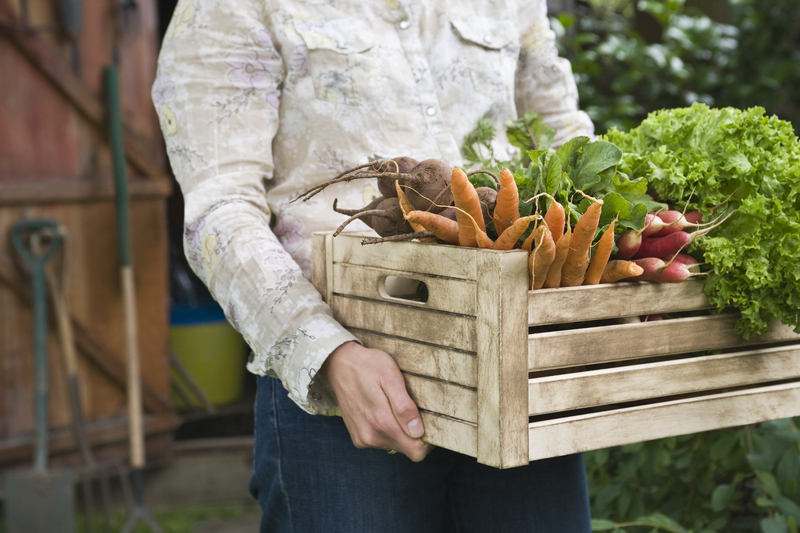Designing Interactive Gardens for Little Adventurers
Posted on 30/09/2025
Designing Interactive Gardens for Little Adventurers: Unlocking Imagination in Outdoor Spaces
Children are innately curious, playful, and adventurous. Providing them with a vibrant outdoor environment is one of the most effective ways to nurture their creativity and development. Interactive gardens for children offer endless opportunities for exploration, learning, and fun. This comprehensive guide explores how you can design and implement imaginative play spaces through interactive gardening for your little adventurers.
Why Create an Interactive Garden for Kids?
Outdoor spaces are more than just patches of grass or decorative landscaping; they are living laboratories, stages for grand adventures, and sanctuaries where imaginations bloom. Here are the top reasons to build interactive gardens for little adventurers:
- Boosts cognitive and physical development: Children engage all five senses when interacting with varied natural elements.
- Encourages creativity: Open-ended play spaces allow kids to invent stories, games, and worlds.
- Teaches responsibility and environmental care: Tending to plants and observing wildlife fosters environmental stewardship.
- Reduces stress and screen time: Nature-inspired play calms the mind and keeps children physically active.
- Fosters social skills: Cooperative gardening and collaborative adventures teach sharing and teamwork.

Essential Elements of an Interactive Garden for Children
Designing a child's interactive garden is about more than just aesthetics; it's about function, safety, and tactile experiences. Below are the vital features for gardens that captivate and encourage exploration:
1. Safe, Accessible Pathways
Every aspiring adventurer needs a trail to follow! Create winding paths using natural materials like wood chips, stepping stones, or grass. Ensure they are even and wide enough for running or wheelchair access. Accent the borders with low-growing herbs or sensory plants to invite touch and scent as they move along.
2. Sensory Zones
Engage all the senses by designing zones specifically tailored to sight, smell, sound, touch, and taste:
- Sight: Plant flowers of differing colors, shapes, and bloom times.
- Smell: Incorporate fragrant plants like lavender, mint, or rosemary.
- Sound: Add rustling grasses, bamboo, wind chimes, or water features.
- Touch: Use fuzzy lamb's ear, smooth succulents, and bark textures.
- Taste: Include edible treats such as strawberries, cherry tomatoes, or snap peas.
3. Secret Spaces
Every child deserves a hideaway. Consider small forts made of willow, bean teepees, or sunflowers arranged in circles. These enclosed areas spark imaginative play, quiet reflection, or secret meetings with friends.
4. Climbing and Balancing Features
Introduce adventure with logs, boulders, balance beams, or low climbing frames. Ensure durable, natural materials and proper anchoring for safety. These structures build coordination, muscle strength, and courage.
5. Water Play
Water captivates every age. Simple additions like a small pond, birdbath, or child-friendly hand pump create opportunities for discovery and wildlife observation. Always supervise children and ensure shallow depths for safety.
6. Interactive Planting Beds
Dedicate a section for children to plant, water, and harvest their own garden. Raised beds at varying heights provide accessibility for all ages and abilities. Incorporate quick-growing seeds like radishes, sunflowers, or nasturtiums for instant gratification.
7. Art and Storytelling Corners
Include a small seating nook or outdoor chalkboard. Encourage artistic expression, reading, and storytelling surrounded by nature. Shelters or trellis tunnels covered in vines offer both shade and enchantment.
Planning Your Interactive Garden for Young Explorers
Successful interactive garden design for kids relies on thoughtful planning. Here's how to get started:
Step 1: Assess Your Space
Start by evaluating your available area. Do you have a backyard, a balcony, or shared community space? No matter the size, you can design interactive elements suited for little hands and minds.
- Large gardens: Create winding trails, dedicated zones, and several play features.
- Small yards or patios: Use vertical gardens, compact sensory pots, or movable planters.
- Limited space: Get creative with windowsill gardens, recycled containers, or hanging baskets.
Step 2: Involve Your Little Adventurers
Children are more invested and excited when they help plan. Ask questions like:
- "What colors or plants do you like?"
- "Would you rather have a secret fort or a butterfly garden?"
- "What animals or insects do you want to attract?"
Sketch ideas together or browse garden catalogs as a family. This sense of ownership fosters lifelong gardening appreciation.
Step 3: Focus on Safety
Children's garden safety is paramount. Avoid toxic plants, ensure play structures are secure, and maintain clear sight lines for supervision. Padded surfaces under climbing areas and shade for sunny zones minimize accidents and sunburns.
Step 4: Plan for All Seasons
Integrate plants and activities that offer year-round interest:
- Spring: Bulbs, edible greens, and nest boxes.
- Summer: Sunflowers, bean towers, and butterfly-attracting blooms.
- Autumn: Pumpkins, colorful foliage, and wind-spun decorations.
- Winter: Evergreen shrubs, birdfeeders, and frosty sensory exploration.
Engaging Activities for Interactive Children's Gardens
A garden becomes truly interactive when you pair it with creative activities. Try these inspiring ideas for interactive play gardens:
- Treasure Hunts: Hide natural objects or painted rocks for weekly scavenger hunts.
- Fairy and Dinosaur Gardens: Build themed miniature worlds within a flowerbed or old sandbox.
- Insect Hotels: Construct bug havens using bamboo tubes, bark, and straw to attract beneficial creatures.
- Art in Nature: Paint stepping stones, build twig sculptures, or make transient mandalas with leaves and flowers.
- Outdoor Cooking: Use mud kitchens or solar ovens to create edible flower snacks or herbal teas.
- Wildlife Observation Journals: Encourage note taking, drawing, or photography of birds, insects, and changing seasons.
Games That Inspire Adventure
- Obstacle Courses: Arrange logs, stepping stones, and balance ropes.
- Nature Bingo: Create cards with garden sights, sounds, or critters to spot.
- Shape and Color Trails: Paint shapes or colors on stones to guide a fun 'maze' adventure.
Top Plant Choices for Adventure Gardens
Choosing the right plants is critical for child-friendly, interactive gardens. Seek varieties that are:
- Non-toxic and safe if touched or (in some cases) tasted
- Resilient to heavy foot traffic or handling
- Quick to grow and provide multisensory appeal
Best Plants for Sensory Gardens
- Lamb's Ear (soft texture)
- Lavender (soothing scent)
- Sunflowers (dramatic height, seeds to harvest)
- Nasturtiums (edible flowers and leaves)
- Mint or Lemon Balm (aromatic, vigorous growth)
- Sedum or Sempervivum (succulents for touch/texture)
- Strawberries and Bush Tomatoes (easy pick-your-own treats)
Always check each plant's toxicity before adding them to your garden, especially with very young children or pets around.
Including Wildlife Habitats
Gardens are even more exciting when joined by birds, butterflies, and frogs! Add a shallow water dish, pollinator plants, and piles of rocks or logs to attract diverse garden visitors. Teach children to observe and respect wildlife, enhancing their connection to the natural world.
Maintenance Tips: Keeping Your Interactive Garden Thriving
Even the wildest adventure gardens need a little care. Here's how to maintain a garden that grows with your children:
- Encourage child participation: Let kids water, weed, harvest, and tidy up.
- Create seasonal projects: Rotate activities according to the time of year--planting, composting, or making feeders.
- Take notes together: Keep a garden journal chronicling what you plant, what grows, and your children's discoveries or stories.
- Adjust as they grow: As children mature, invite them to plan new features or take on more responsibility.

Expert Tips for Designing the Best Adventure Garden for Kids
- Mix heights and textures: Create a landscape that feels like a journey, with tall sunflowers, low herbs, and paths winding between.
- Use recycled and natural materials: Spare logs, tires, old pots, or bamboo can become upcycled balance beams, planters, or art surfaces.
- Add signage: Homemade nameplates let kids label their plants, personalize secret spaces, or create playful directions ("Dragon's Den This Way!").
- Incorporate undulating land: Small hills, mounds, or 'dry riverbeds' add dimensionality and dramatic flair.
- Install child-sized tools and seating: Make gardens accessible and comfortable.
Conclusion: Nurturing Curious Minds Through Interactive Garden Design
By creating interactive gardens for little adventurers, you're offering so much more than a play area. You're planting the seeds for a lifetime of discovery, confidence, and wonder--one garden path at a time. These green sanctuaries inspire not only play but learning, problem-solving, and stewardship for the earth.
Whether you're working with a sprawling yard or a compact balcony, a little creativity yields a world where young explorers thrive. Center your design around sensory experience, imagination, and safety, and let your children lead the way. With each new season, your adventure garden will evolve and continue igniting young minds under the open sky.
Are you ready to design your own adventure-filled interactive garden? Start today, and watch your little ones uncover endless magic just beyond the back door!

